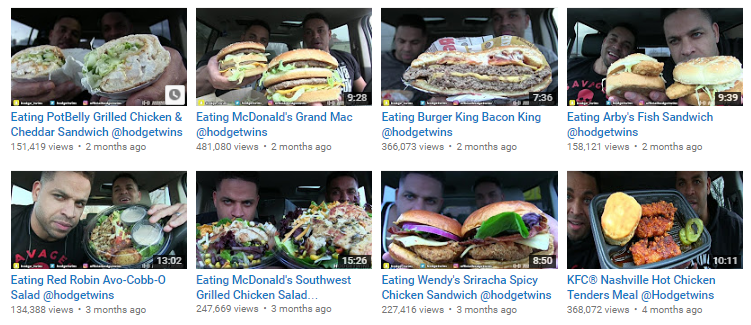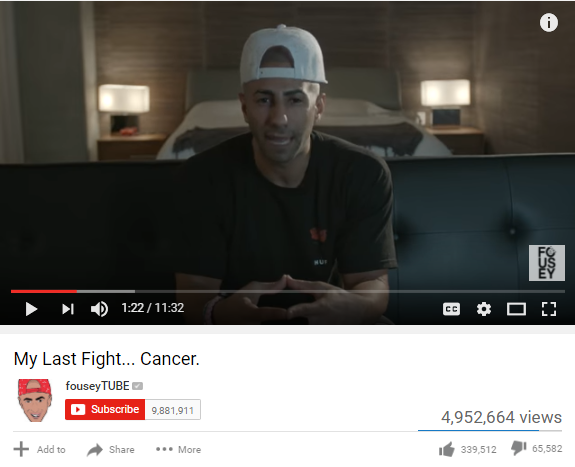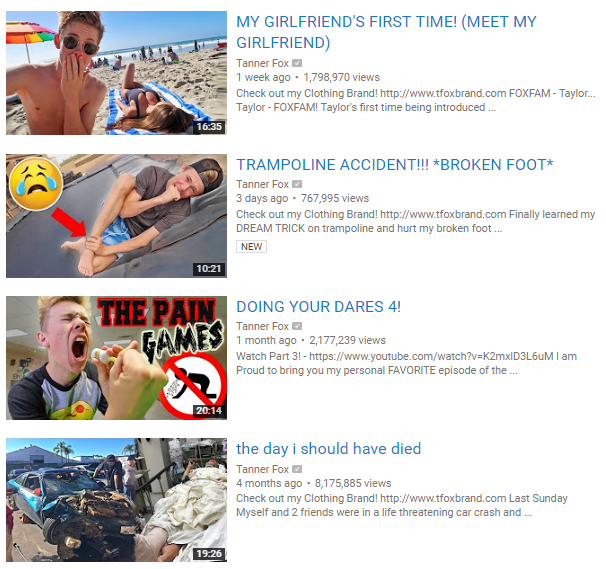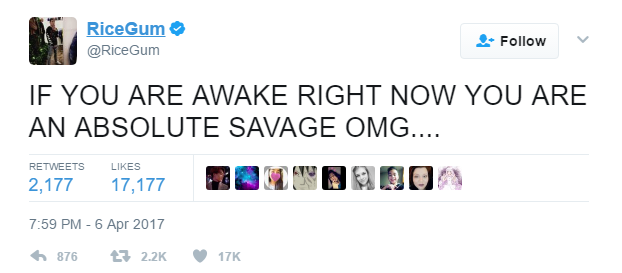I don’t know about you, but I’m fascinated by the weird world of e-celebrities and Internet trainwrecks. Not exactly quality content.
What can I say? Let’s call it a guilty pleasure.
Yet the more time I spend (read: waste) on sites like YouTube, the more I question the concept of “quality content” altogether.
Are “Likes” and shares truly the measuring stick for quality? Does a fierce flame-war in the comments section mean that you’re doing something right?
Although comparing the world of viral videos to written marketing content may be apples and oranges, you would think that we play by similar rules when it comes to content, right?
We strive to be creative. We want engagement and exposure. The list goes on.
But here’s the question: how do we assess quality in an era where our feeds are flooded with a constant stream of clickbait and low-effort content?
Regarding Content, the Cream Doesn’t Always Rise to the Top
Look: I understand that there’s not always a direct correlation between “quality” and “popularity.”
You want proof? Turn on the radio for about fifteen seconds.
Similarly, spend a few minutes in YouTube’s “Recommended” section and you’ll likewise find some, uh, “quality” gems.

Reaction videos. People reviewing fast food in their cars. TRY NOT TO LAUGH CHALLENGE #47.
Millions of views.
No big deal, right?
Sure, but bear in mind that such videos are raking in some serious dough. Meanwhile, many of these same channels have amassed millions of subscribers.
Prior to YouTube taking a sledgehammer to its creators’ ad revenue, these sorts of videos could score about $1 per ~1,000 views.
Do the math.
The result?
An epidemic of clickbait and content creators pumping out as many videos as possible in pursuit of a quick buck.
Before I’m labeled some sort of “hater,” let me stress that people have the right to create whatever they want and make a living however they choose.
That being said, there’s something inherently lazy (and sometimes scummy) about clickbait; meanwhile, it’s glaringly obvious that many YouTubers will force new content even if it’s totally mundane.
A shining example of scummy clickbait comes from FouseyTube, who boasts well over 10 million subscribers between his two channels. His claim to fame? Pranks, “social experiments” (many of which are clearly staged) and shameless clickbait titles. Check out the title of this video in which Mr. Fousey recounts a visit with a young fan battling cancer:

Seems a bit tasteless, doesn’t it?
These sorts of tactics are commonplace in the world of YouTube, where clickbait titles and thumbnails are keyto driving engagement.

Unethical? Sometimes. Lazy? Probably.
But it’s all about the clicks, man.
That’s the difference between the world of written content and visual content, though.
When you betray the trust of someone in search of worthwhile written content (think: a how-to guide, for example) they’ll bounce. The mentality of many YouTubers is “any press is good press,” as bringing in views is their number one priority. Even if their content results in a good ol’ fashioned roasting or flame-war, they still view their videos as winners.
With this mentality, the concept of quality content falls to the wayside.
What Content Writers Can Learn from Clickbait YouTubers
That being said, we can learn a thing or two from clickbait YouTubers when it comes to why people show up to their content in the first place.
1. Consistency Counts
Most of the big YouTubers out there are uploading on a daily basis (or at least a few times per week).

Love them or hate them, we can at least compliment their consistency. There’s no denying that the more content you put out there (regardless of quality), the more likely you are to build an audience that has some sort of stake in what you have to say.
2. Controversy Creates Interest
From clickbait titles to off-the-wall stunts, people will respond to content that pushes their buttons. Content writers shouldn’t use controversy as a bait-and-switch; however, getting your audience fired up certainly trumps boring them to death.
For example, Dubai-based YouTuber Mo Vlogs has amassed an army of subscribers by constantly flaunting his cash and supercars on screen. His daily vlogs never reveal or reference the source of his wealth, nor is he particularly humble about his lifestyle. This inevitably drives more comments and engagement (both negative and positive) which result in even more outlandish behavior on his behalf.

Simply put, the YouTube community thrives on drama. Controversy and clicks are prioritized over any sense of quality.
But why?
3. Your Audience Determines “Quality Content”
Low-effort YouTubers operate in a world where they’re trying to appeal to a very specific audience: oftentimes, it’s teenagers or the lowest common denominator. As a result, we look at their content as total crap, but in reality, it’s filling the void for an audience that, well, doesn’t really care about “quality.”

As long as you have an audience that supports your content and its message, “quality content” truly is in the eye of the beholder.
The Question of Quality Content in the Clickbait Era
If you’re a content creator that’s confused, frustrated or incensed by the popularity of seemingly low-quality content, don’t be.
You aren’t wasting your time by putting effort into your work, nor should you try to emulate the success of seemingly “viral” sensations.
YouTube is a cesspool for low-effort trash; however, there some creators out there fighting the good fight for the sake of quality content.
I have a soft spot for guys like Anthony Fantano of the Needledrop, who consistently puts out humorous, in-depth reviews on indie records.
Likewise, the good people over at Beardbrand boast a unique mix of grooming tips and motivation for the bearded crowd.
Niches come in all shapes and sizes, which is good news for content writers and creators who aren’t lazy or scrummy.
Think about it like this: if random YouTubers can build an audience via clickbait and vlogging the most mundane details of their daily lives, think of what you can do creating content that actually means something.
We create content based on the wants and needs of our audience.
That’s why hard and fast rules concerning content creation can often be thrown out the window. If you don’t know what approach to take or what messages will resonate with readers, start by doing your homework on your audience.
What do they want to see? What’s going to stop and make them go “Huh?” What’s going to keep them coming back for more?
In short, create content for an audience versus hoping that one simply ends up on your doorstep.
Agree? Disagree? Bug me about it on Twitter (@brentwrites).
Photo credit to Creative Stall of The Noun Project.

This is a really good tip particularly to those new to the
blogosphere. Brief but very accurate information… Thanks for sharing this one.
A must read article!